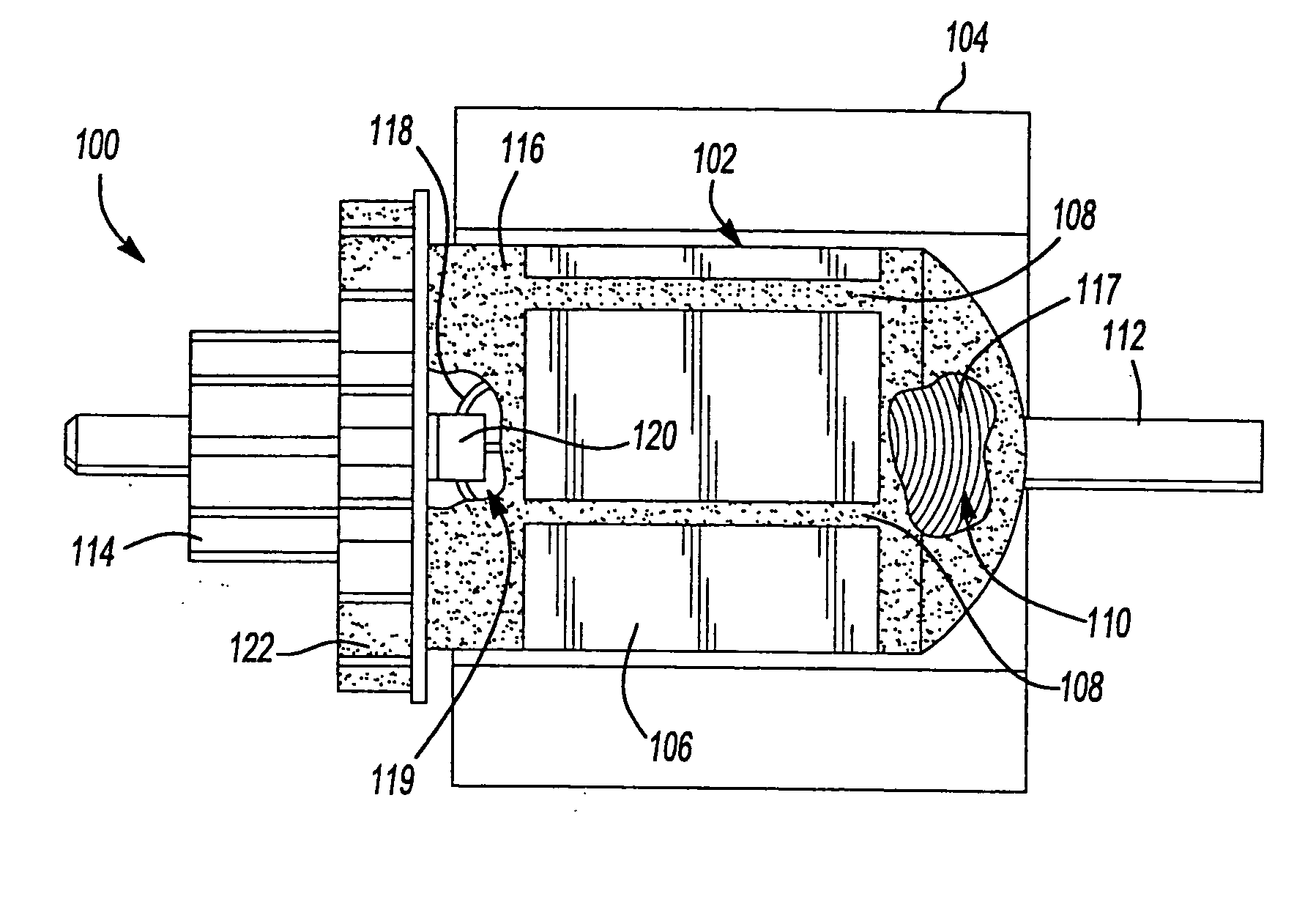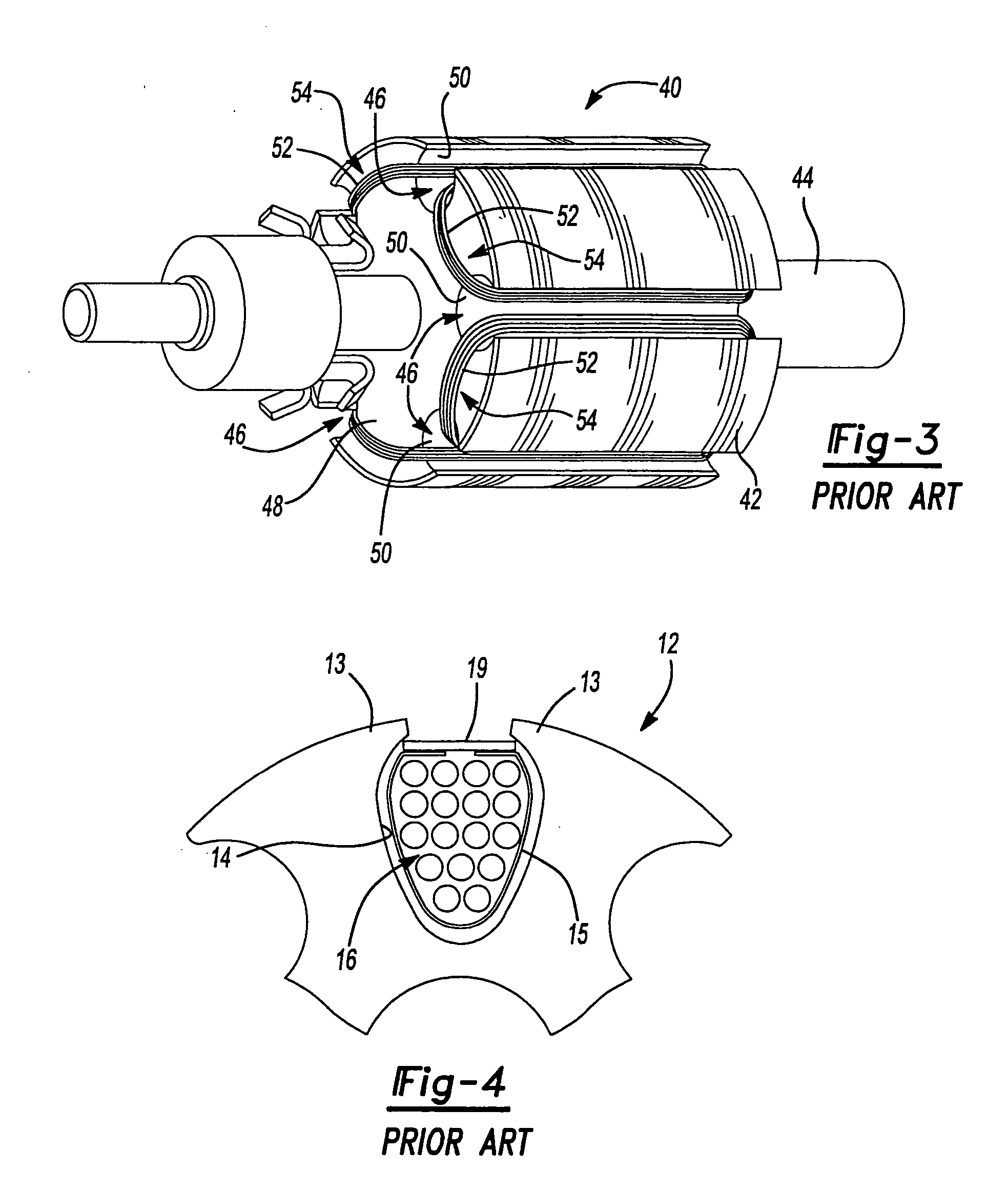Dynamoelectric machine having encapsulated coil structure with one or more of phase change additives, insert molded features and insulated pinion
a technology of phase change additives and dynamoelectric machines, which is applied in the direction of magnetic circuit rotating parts, stator/rotor bodies, and shape/form/construction of magnetic circuits, etc. it can solve the problems of difficult to achieve consistent process, large ovens, and difficult to perform reliable, consistent trickle process, etc., to achieve the effect of increasing the critical speed of the armature and increasing the stiffness
- Summary
- Abstract
- Description
- Claims
- Application Information
AI Technical Summary
Benefits of technology
Problems solved by technology
Method used
Image
Examples
Embodiment Construction
[0078] Referring now to FIG. 5, a motor 100 in accordance with a preferred embodiment of the present invention is disclosed. The motor 100 includes an armature 102 and a stator 104, the stator being illustrated in highly simplified fashion. The armature 102 incorporates a lamination stack 106 having a plurality of longitudinal slots 108 arranged circumferentially therearound. A plurality of magnet wires 110 are wound in the slots 108 to form a plurality of coil windings having end coils 117. An armature shaft112 extends coaxially through the lamination stack 106 and has disposed on one end thereof a commutator 114. A thermally conductive plastic 116 is injection molded over the armature 102 so that the plastic flows into and through each of the slots 108. The thermally conductive plastic 116 is applied by placing the armature 102 in a suitable injection molding tool and then injecting the thermally conductive plastic 116 under a suitably high pressure into the molding tool. The ther...
PUM
| Property | Measurement | Unit |
|---|---|---|
| dielectric strength | aaaaa | aaaaa |
| temperature | aaaaa | aaaaa |
| thermally conductive | aaaaa | aaaaa |
Abstract
Description
Claims
Application Information
 Login to View More
Login to View More - R&D
- Intellectual Property
- Life Sciences
- Materials
- Tech Scout
- Unparalleled Data Quality
- Higher Quality Content
- 60% Fewer Hallucinations
Browse by: Latest US Patents, China's latest patents, Technical Efficacy Thesaurus, Application Domain, Technology Topic, Popular Technical Reports.
© 2025 PatSnap. All rights reserved.Legal|Privacy policy|Modern Slavery Act Transparency Statement|Sitemap|About US| Contact US: help@patsnap.com



